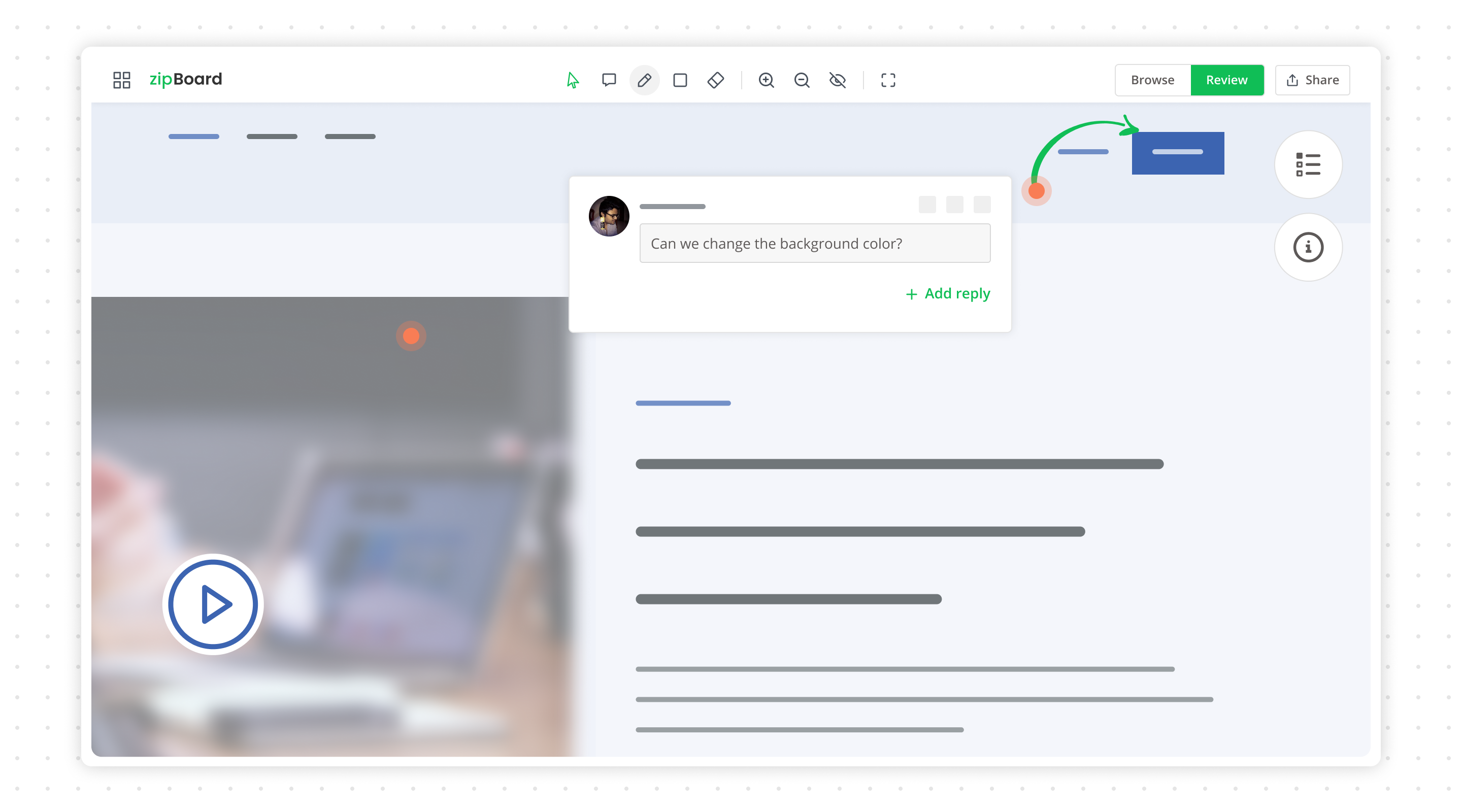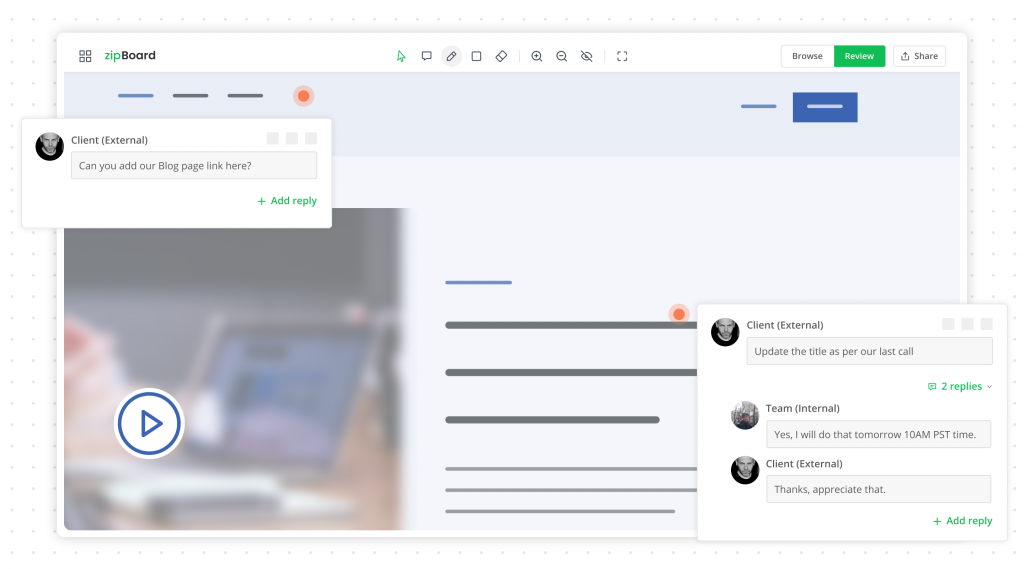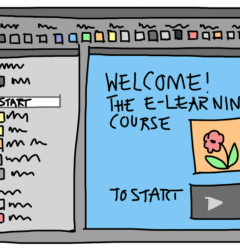How to create engaging eLearning courses using the Agile methodology?
22 Jan

Table of Contents
ToggleeLearning professionals who have been in the industry for over a decade know-how eLearning development have evolved over the years. Creating eLearning content can be a daunting process. Developing a curriculum, thinking the course design framework, and creating engaging content is imperative for providing value to learners. The eLearning development process often can be difficult to follow and feels complex especially when there are a bunch of team members working together.
There is a lot of communication happening among the team members. If communication and internal feedback are not handled efficiently, it might take forever to develop eLearning content. With the evolution in web designing methodology, there has also been an evolution in eLearning content development. Online courses have always been about creating content that is informative and engaging with the learners. Building engaging eLearning courses demand that every content, functionality, LMS features, user inputs, and navigation throughout the course is quality tested and feedback is taken from the internal team and external stakeholders for optimizing the content.
Anyone who has been remotely connected with the eLearning industry would know about the eLearning development methodology “ADDIE” and “SAM”. But with changing times, the eLearning industry is switching to a more advanced development methodology that is already being used in software and web development, namely Agile Development.
Before we jump on agile development let’s understand what defines a good eLearning instructional design process?
It should follow the below principles
- One that is iterative – provides opportunities to integrate feedback, test, and redesign.
- Collaborative – Include learners, managers, stakeholders in the design process.
- Efficient and effective – Process should ensure agility, ability to move quickly.
- Easily managed and visible to everyone.
In this article, we are going to go see how the eLearning development process has evolved with Agile development, why you need to start incorporating agile eLearning in your online course development process, and how you can go about creating engaging eLearning courses using the agile development method.
Download our free e-book on Instructional design processes ebook
Traditional e-learning development process ( Instructional design process )
If you have ever worked in the eLearning industry you must be familiar with the concept of the Instructional design process. There are various instructional design models that eLearning professionals use. Out of all the most popular, Instructional design models is ADDIE.
ADDIE (Analysis, Design, Development, Implementation, and Evaluation) has been a widely used model. It forces the eLearning developers to thoroughly go through each step of a content development process. This ensures that nothing gets missed and the output is a solid eLearning course that is going to be liked by others.
Another popular instructional design model is SAM (Successive Approximation Model). SAM is based on the concept that eLearning projects can be finished in small, iterative pieces of content. It allows us to adjust the project’s plan whenever a flaw is found in the process. The main benefit of the Successive Approximation Model is that it operates on a short feedback loop cycle which ensures the team has to not wait to complete the project to realize the efforts went down the drain and everything needs to be built from scratch.
Though both ADDIE and SAM are instructional design processes they are different in the sense that ADDIE is a linear process and SAM is a cyclical process. We are not going to discuss the advantages and disadvantages of each of this eLearning development process in this post. But if you are interested to learn more then check this article on ideal instructional design models.
As I mentioned previously e-learning has evolved from slides and simple videos to more interactive content. It forced eLearning professionals to look into different industries and try to find a model they can adopt to improve the speed and quality of eLearning development. The closest to the eLearning industry is the web development and software development industry. Though there are huge differences in them, the core principle of managing a project is more or less similar.
For example, web development projects involve content, graphics, animations, downloadable pdfs, action-based triggers. All of this is also needed in eLearning content development. Similarly just like software that functions based on the inputs provided by the user, eLearning courses these days behave somewhat like that. eLearning content uses logic these days to make sure they grab the attention of the user. And teach them what the course is intended to teach.
Add Your Heading Text HerProject management methods used in the software and web development industrye
There are mainly two methods for managing web development or software development projects. They might seem, or in fact, they are more or less similar to ADDIE and SAM but their names are different. These methods are the Waterfall Method and Agile Method. Let’s see in short what these methods are.
The Waterfall Method of project management follows a linear approach to managing a web development or software development project. Yes, you guessed it right. It is similar to the ADDIE method.
The agile method on the other hand is a completely different method used for software development projects. You might be guessing that it is a cyclical method like SAM. But no it is different even than that. The agile project management method is an iterative process that follows linear action but also involves a feedback and review loop. This feedback could be from the client or the internal project manager depending upon the scope of the project. But in either case, it is a very successful model and not just the eLearning industry but many other industries are also implementing Agile project management in their business management workflow.
If you wonder which method is going to suit your project you might want to check this detailed comparison between Waterfall and Agile methodology.
Why Agile Project Management?
To answer this question we will first have to see the components and main principles of Agile methodology. Agile is an iterative method that is based on the foundation of teamwork and collaboration. Instead of adding tasks to a project, it uses SPRINTS.
Sprints are a defined set of goals to be achieved usually in a week. And there is a list of deliverables that needs to be completed to achieve a goal. All of this is planned at the start of the week or call it the start of the sprint. These deliverables are prioritized based on the value it contributes towards a given goal or as advised by the client. Deliverables with the highest value are put on top priority while the ones that have less business value are given low priority.
At the end of the sprint in case if some deliverables are not finished then they are reprioritized and put in the next sprint. For the current week, whatever work is completed can be reviewed by the manager or the client. This review can be compared to the deliverable that was agreed upon. This way the deliverables once complete can be closed and not talked about again and again.
Agile project management however requires a high level of customer or project manager’s involvement to review and keep the project as a whole.
What are the benefits of Agile project management?
Client Engagement
The client is involved in the project from the very start of the project. This helps clients review the content and make decisions, which directly helps the project team to make any changes as and when needed instead of waiting for the complete project to be finished. Clients also feel strong ownership of the project and provide client satisfaction in every phase of the project.
Smooth handling of project changes
Developing a website or software or eLearning content takes months or sometimes even years to complete. At the same time, there can be shifts in the overall requirement as was planned at the time of the planning phase. By using Agile methodology these changes in the project roadmap can be easily handled.
User-focused Approach
A product is usually developed keeping in mind the usability of that product by the end-user. Be it eLearning courses, website, or any service, there has to be a market that is being catered. And if the demand for the market changes then the direction of product development should also be changed. Otherwise, there is no point in developing a product that had a market at the initiation of a project but by the end, the market shifted to something else. With Agile project management, you can continuously integrate changes based on the user’s demand and still stick to the main vision of the project.
Predictability
Agile project management provides a high level of predictability of delivery time, cost, and resources required. As it uses sprints which generally run for a week, you can easily track progress and analyze how much it’s going to take to complete the project. Similarly, you can even analyze what the final cost of the project would look like while using x amount of resources. Basis of the predicted analysis you can make changes to product or resources or budget. That is why Agile eLearning development is being widely adopted these days, due to its flexibility in managing the projects with the desired outcome.
Business Value
As mentioned earlier Agile process runs on sprints and deliverables that are prioritized based on the value of that particular deliverable. This helps teams understand and work on the items or features that deliver high value to the client business.
Improves Quality
Agile project management allows for breaking down the development process into small pieces. This allows teams to focus on developing high-quality content. Additionally, small units of content allow for easy testing and reviews. During every review or testing cycle, the quality of the content can be improved by finding and fixing small defects.
How do you bring Agile into your e-learning development process?
There is a very high demand for eLearning courses these days and time is of the essence. Thus, developing eLearning content quickly is the need of the hour. Agile eLearning process development for quick development of eLearning courses. Let’s see how you can utilize Agile to develop your eLearning content faster and with improved quality.
“The most important key to Agile eLearning development is – Delivering in smaller pieces to get feedback in the process”
Project plan
Any project starts with a plan and that is also true in the case of Agile development. During this phase try to gather as much as possible about the needs of the learner. Understand what are the goals of the organization. Do an in-depth analysis of current courses or programs already available and how the upcoming course would provide additional value. These needs and goals however might change from time to time while the course is being developed. It is here where Agile project management comes handy for developing eLearning courses. With agile eLearning development, one can identify the outcome of the overall training program. For example at the time of initial planning, there was no need for an “XYZ” module in the course, however, during review cycles it was found that the XYZ module would be needed to achieve the desired outcome. In Agile eLearning development, this would be easier to identify the need and accommodate the additional modules. No need to completely start from scratch.
Prototyping the course
Once the initial plan is devised and the roadmap is set it’s time to build a prototype. In this phase gather all the resources that would be needed during the actual development process. See what all tools and resources would be needed to achieve the desired results of building the eLearning course. Building the prototype would allow us to understand all the requirements to get from point A to point B. Prototyping an eLearning course is breaking down a project into small units and identifying steps and skills required while trying to build only one piece at a time. For eg., you are building a course that has 5 modules and each module consists of 3 lessons of 30 mins each. So basically you will only build either only one lesson which has all the components of the complete course or builds a few lessons of shorter duration like 3 mins each lesson. By doing so you can take feedback from the client right when you are trying to understand the full scope of the project.
Reviewing the course
After the prototype is developed it’s time to review the project so far. The review phase is a continuous and cyclical process. However, this phase of Agile project management consists of two sub-processes. The first one is to review the prototype and find solutions to problems that were found while developing the prototypes. Review the prototype by both client and internal teams to be efficient in developing the main course. Additionally, you can even let the actual users/employees to review the course and provide their feedback. The second part of this process includes the development of complete content and constantly reviewing each small piece of the content. This review has to be checked to be in sync with the overall goals and objectives of the course. You can also add collaborators to these projects with different roles that will allow for a more efficient visual review of your eLearning content. To effectively review the eLearning content and manage your eLearning development you would need a collaborative visual review and feedback tool like zipBoard. zipBoard is completely designed keeping in Agile project management in mind. To start with you can add unlimited projects and collaborators in zipBoard. You have full control of reviewing URL or SCORM content in zipBoard without needing additional tools. With Kanban and List view managing feedback, tasks, and review is simple.

Revise plan
As already talked about there can be changes in plans and roadmap while developing the eLearning content. Agile eLearning development allows us to easily incorporate changes. Learn from your client feedback as to what all changes are needed and how the quality of the content can be improved. All the feedback and visual review collected during the review process comes handy while making changes in the plan. zipBoard allows me to collect all the feedback in one place which makes incorporating revisions in the project plan effortless. While the client might want a constant revision to improve the course but for the project team, it is crucial to understand the effect of revisions on the delivery timeline, budget, and final content outcome. Fortunately, all of this is possible in zipBoard as it is a complete visual review and project management tool. Add the power of visual review, client feedback, bug tracking, and project management all within one single cloud-based tool. Try out zipBoard today.
Test e-Learning courses effectively
Book demo for a personalized walkthrough or sign up for a free 14-day trial. No Credit Card Required!
Get DemoStart Free TrialLearners Feedback
Now that the content is developed it’s time to find out how learners are finding the course. This is important to make sure that the online course provides the best learning experience to the user. To effectively understand the quality of your eLearning course, allow your learners to add their feedback. Conduct surveys and ask them below questions.

How to improve the quality of eLearning courses?
- How are the users finding the content of the course?
- How effective are the visual and graphics that are used in the course?
- Can any of the visuals/graphics be improved, if yes can they visually show where?
- How is the overall navigation of the course?
- Are they able to interact with the course (for instance taking a quiz, submitting forms, downloading transcripts or downloadables, etc.)
Related Post
Recent Posts
- Why Your Team Needs a Content Feedback System (Not Just Comments in Docs) May 28, 2025
- Content Approvals Are Slowing You Down — Here’s the Fix May 26, 2025
- How to Streamline Content Review and Approval — Best Practices, Tools & Automation May 12, 2025
- What Is Content Operations? And Why It Breaks Without a Feedback & Approval System May 3, 2025
- Why Designers Need a Website Visual Feedback Tool: Improve Design Reviews & Client Collaboration April 25, 2025
©️ Copyright 2023 zipBoard Tech. All rights reserved.

